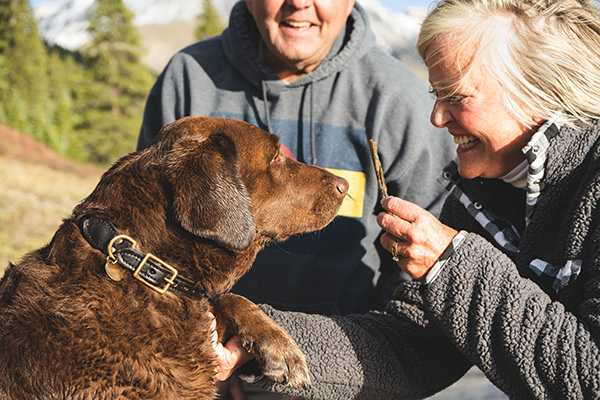Hello, it’s Dr. Susanne Krägeloh again. As a veterinarian, I enjoy working with pets. Our team gets to cuddle all those cute puppies and kittens, and we see them grow up and become adult dogs and cats. We see them grow older and then accompany them into their senior years. For the most part this journey is enjoyable and satisfying, if we can help our pets live long, healthy lives. Often, we can alleviate the little aches and pains which set in once they age. Your pets grow on us during their lifetime. We take part in their lives, celebrating milestones and rooting for them if needed.
But here is something we often forget to consider: The lifespan of a pet is shorter than ours. The end of a life is not something we want to think about, ever, but we have to. Death is a part of life, and we can prepare for the day when it happens. In an ideal world our pet would, when its time has come, curl up in its bed and simply not wake up. Unfortunately, this rarely happens. So, what do we do? How do we prepare for this unthinkable event? How do we know when it is time to say goodbye? And how do we approach this? This is a question we get asked often, and we can help. This is part of our job. First of all, we can look at the quality of life our pet has. The Ohio State University has published a quality of life assessment tool I often use. Here is the link: www.vet.osu.edu/honoringthebond. This tool enables us to objectively judge the quality of life our pet has – or doesn’t have. It helps us take a step back and try to walk in their paws.
Euthanasia does not sound right for most of us. The word actually comes from the Greek language and means “beautiful death”. But what about death can possibly be beautiful? To me it means that we can alleviate suffering, we can help your pet with the transition, and help you to know that you made a good, caring decision. It does not take away from the pain of the loss, but we can also reflect on all the good during the lifetime of your pet. In fact, our pets live on in our memories. We do not forget them. I read a quote once which said: “They leave paw prints in our hearts forever.” This is so true.
As a veterinarian I have to advocate for quality of life. And we in the veterinary profession can help you to make decisions which are right for you and your pet. If you have questions, please ask. This is not an easy talk to have, but it is better to be prepared when the time comes.
So, please: ask the questions. It is not something we can avoid; it is a part of life, and a reality within life. Asking questions regarding end of life decisions is hard, but should never be something we should be ashamed of. Just the opposite: it shows consideration for the wellbeing of our beloved companion.

